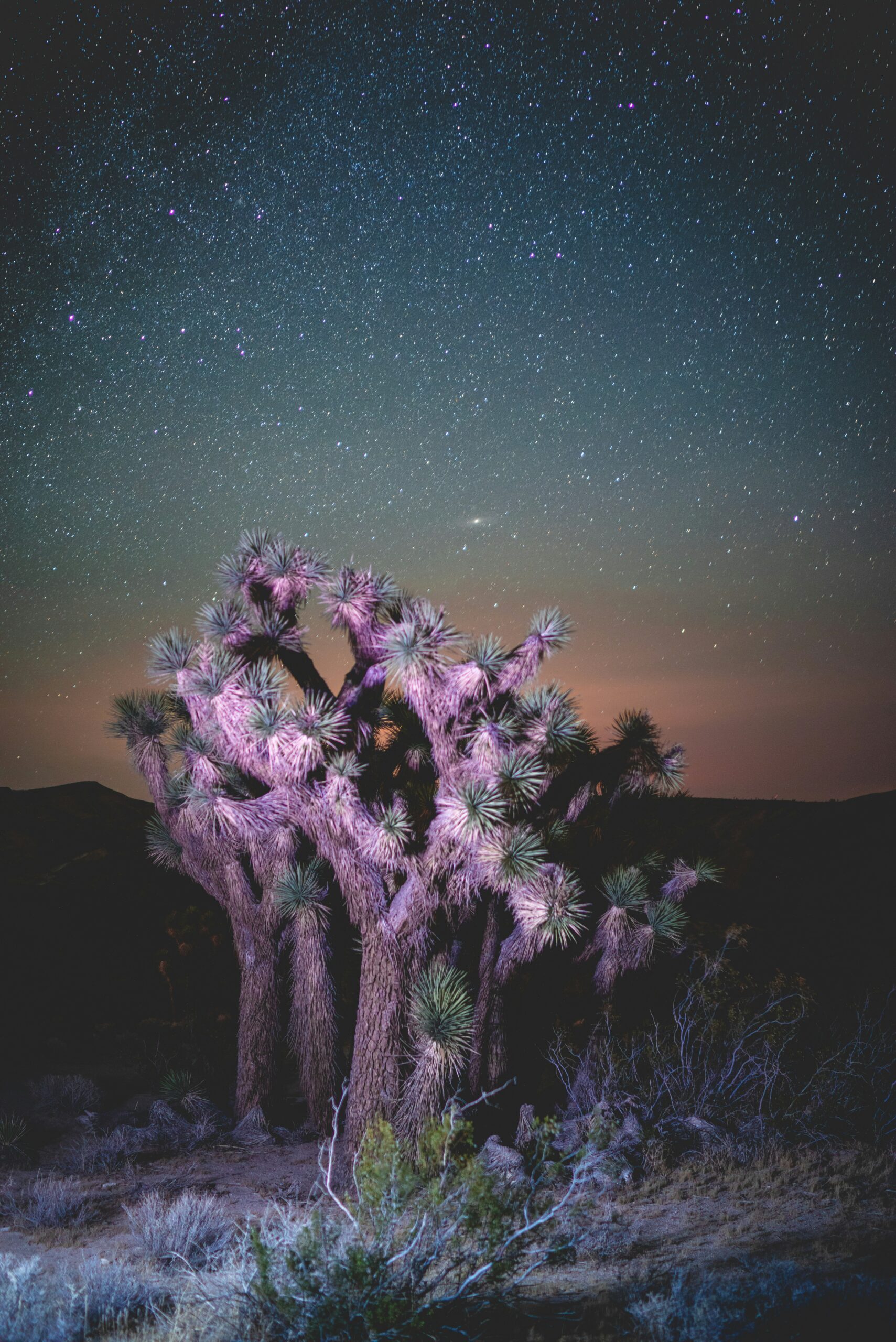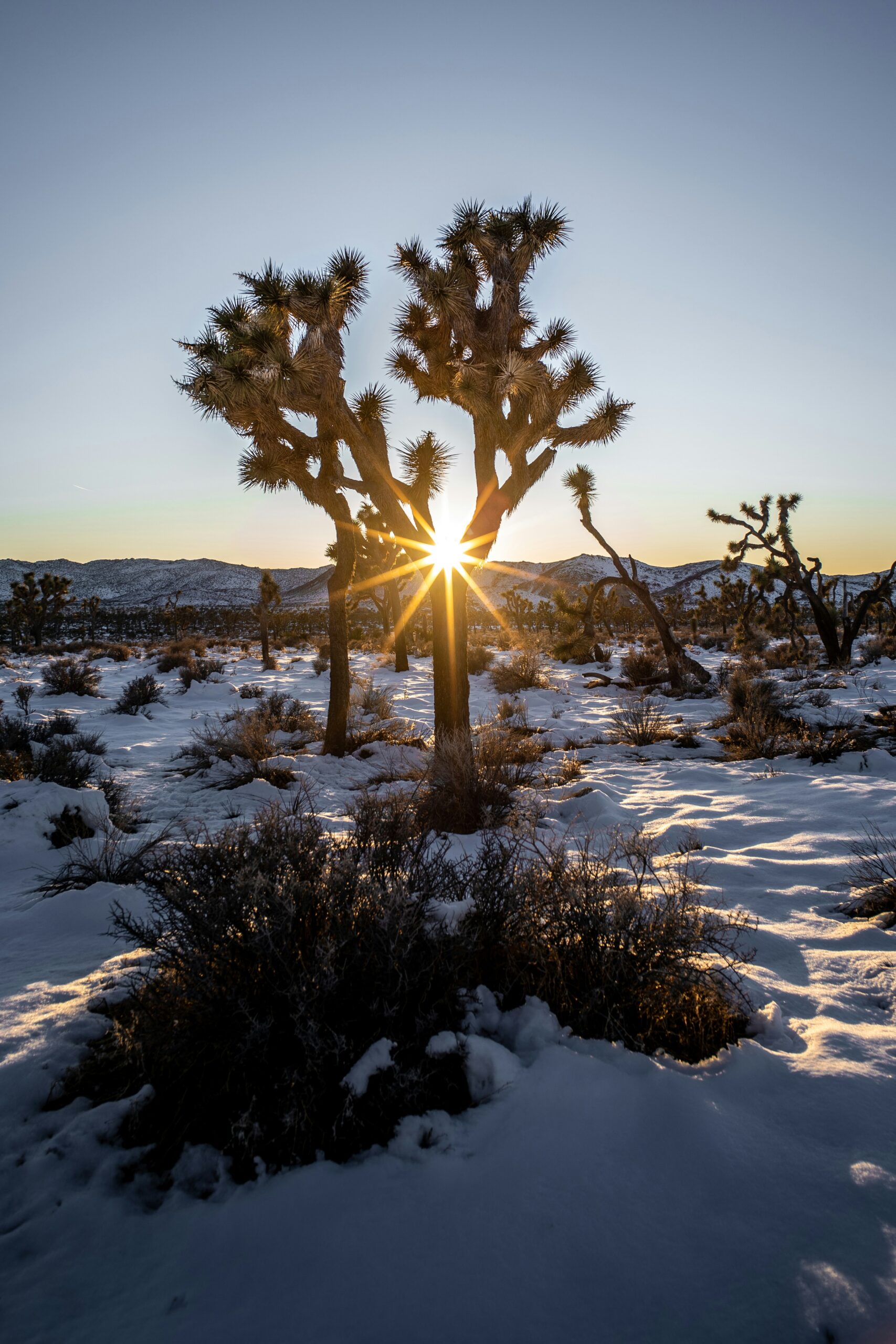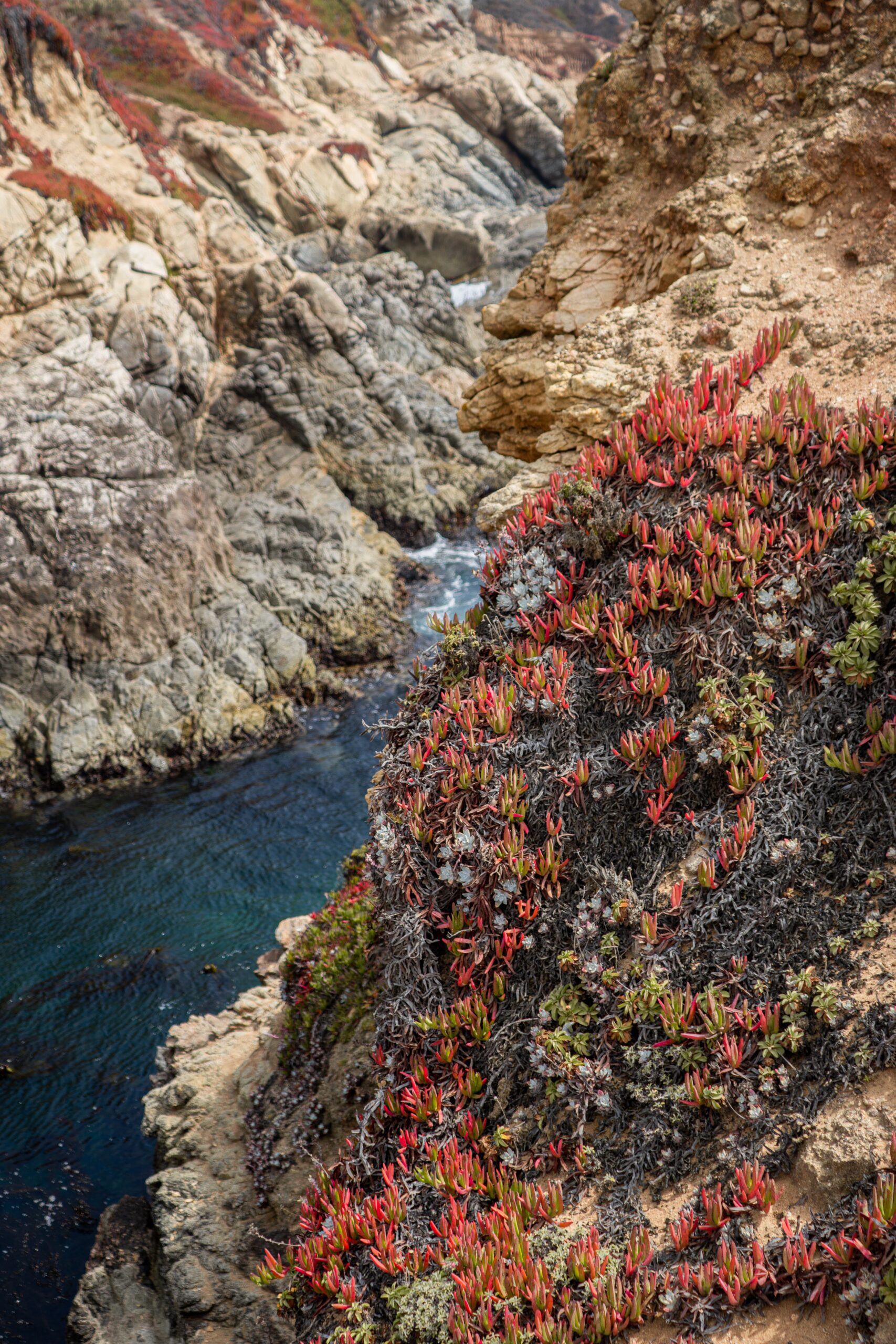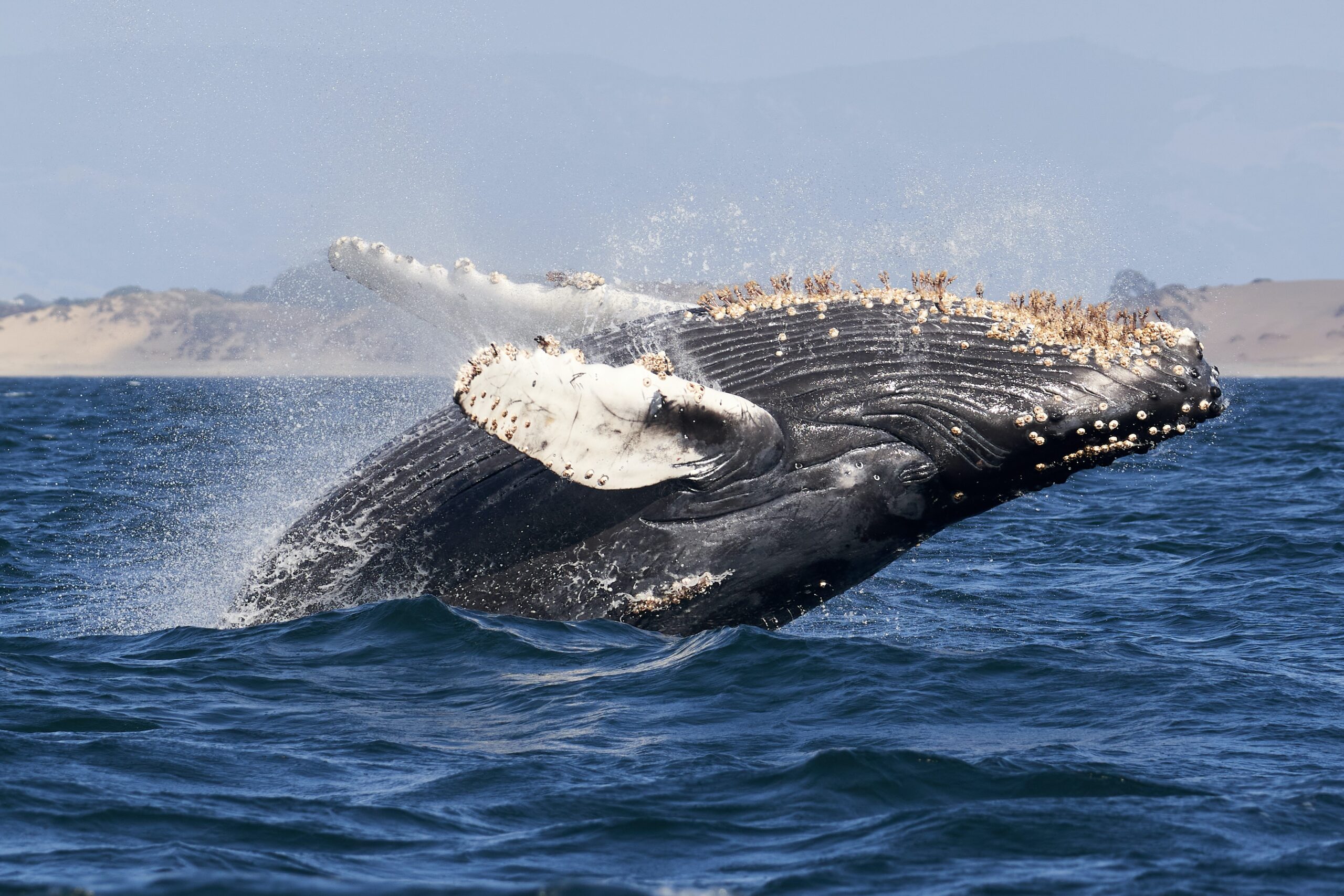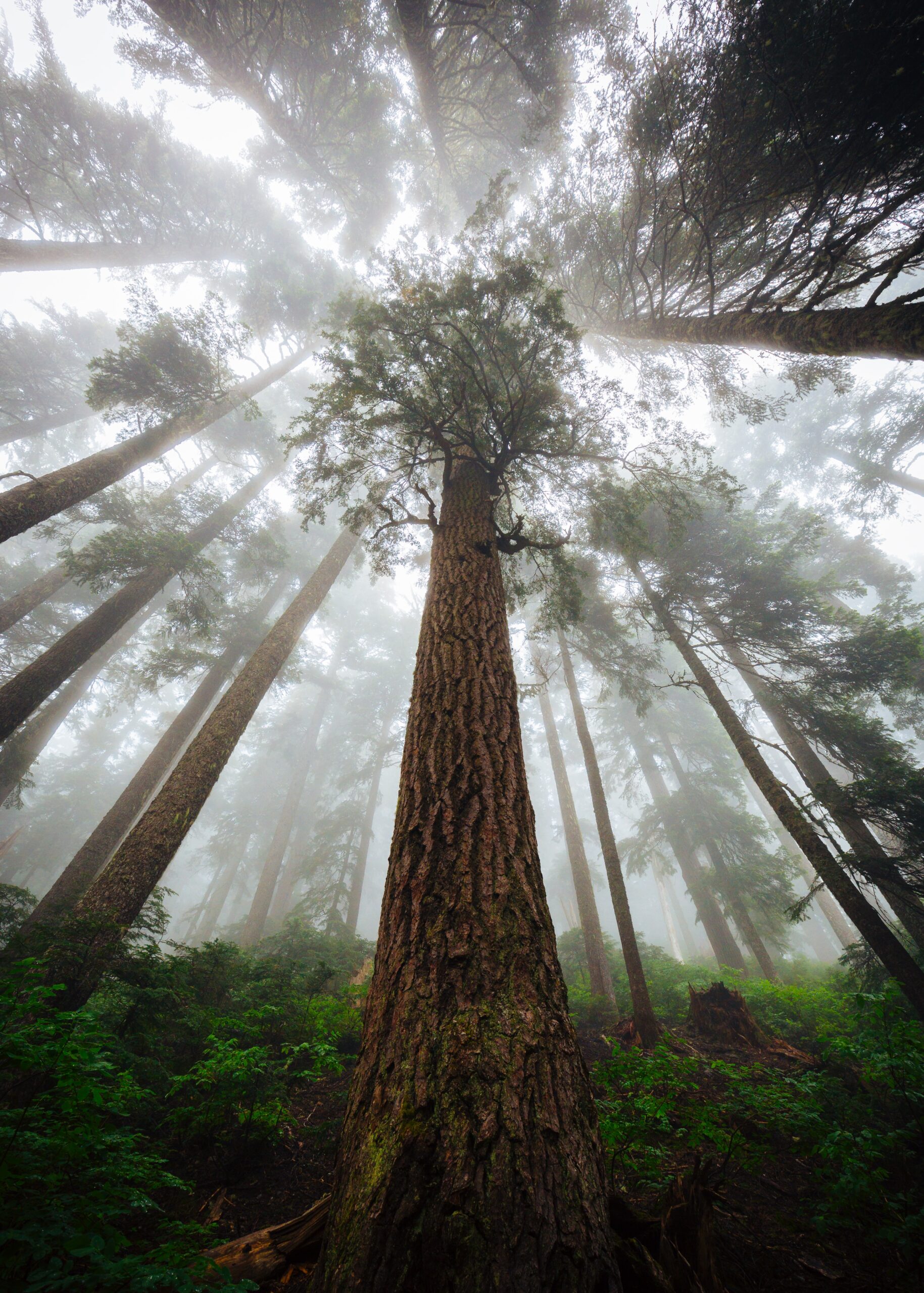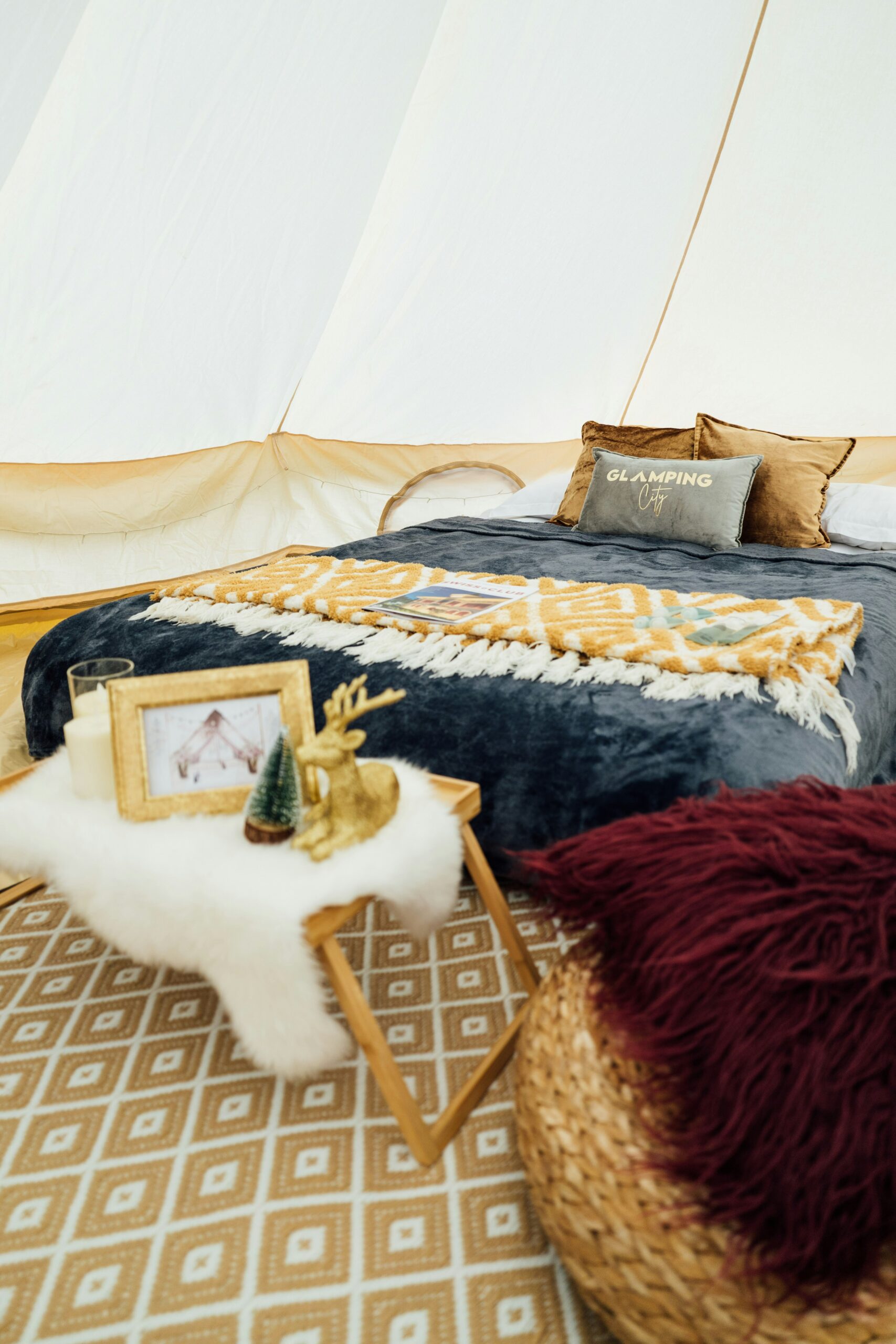Camping in the Mojave Desert: A Stargazer’s Paradise Under Clear Skies
Imagine waking up to a breathtaking desert sunrise, surrounded by unique rock formations and Joshua trees. Camping in the Mojave Desert offers an unforgettable experience for outdoor enthusiasts and nature lovers alike.
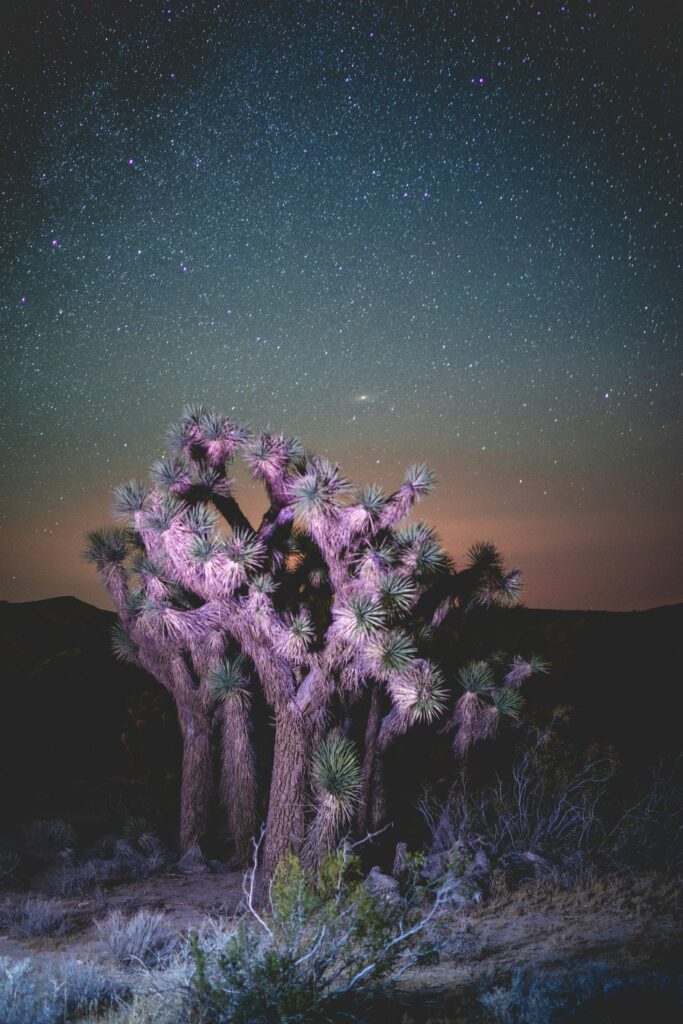
The Mojave National Preserve, spanning 1.6 million acres, provides a perfect backdrop for your desert camping adventure. You can choose from established campgrounds or venture into the vast wilderness for a more rugged experience. The preserve offers over 700,000 acres of wilderness to explore, catering to both novice campers and experienced backpackers.
Whether you prefer RV camping or pitching a tent, the Mojave Desert has something for everyone. You'll find campgrounds at various elevations, each offering unique landscapes and climate conditions. From the cooler, pinyon pine-surrounded Mid Hills Campground to the iconic Hole-in-the-Wall Campground with its sculptured volcanic rock walls, you're sure to find the perfect spot for your desert getaway.
Camping in the Mojave Desert: A Stargazer's Paradise Under Clear Skies
Planning Your Trip
Proper planning is essential for a successful camping experience in the Mojave Desert. Knowing when to visit and how to secure your campsite will ensure a smoother, more enjoyable adventure.
Best Time to Visit
The Mojave Desert experiences extreme temperatures, so timing your trip is crucial. Spring (March to May) and fall (September to November) offer the most pleasant weather for camping in Mojave National Preserve. During these seasons, daytime temperatures are mild, and nights are cool but not freezing.
Avoid summer months (June to August) when temperatures can soar above 100°F (38°C). Winter (December to February) can be surprisingly cold, with nighttime temperatures dropping below freezing.
Consider planning your trip around celestial events. The Mojave's dark skies offer excellent stargazing opportunities, especially during new moon phases or meteor showers.
Camping Reservations
Most campgrounds in the Mojave Desert operate on a first-come, first-served basis. However, it's wise to check ahead for any changes in reservation policies. Mojave National Preserve camping doesn't require permits for most sites, but there are camping limits to be aware of.
You can stay up to 14 days in one location within a 30-day period. After that, you must move at least 25 miles away.
For popular campgrounds like Hole-in-the-Wall, arrive early in the day, especially during peak seasons. Weekdays are generally less crowded than weekends.
If you're planning to camp in more remote areas, inform someone of your plans and expected return date. Cell phone coverage can be spotty in the desert.
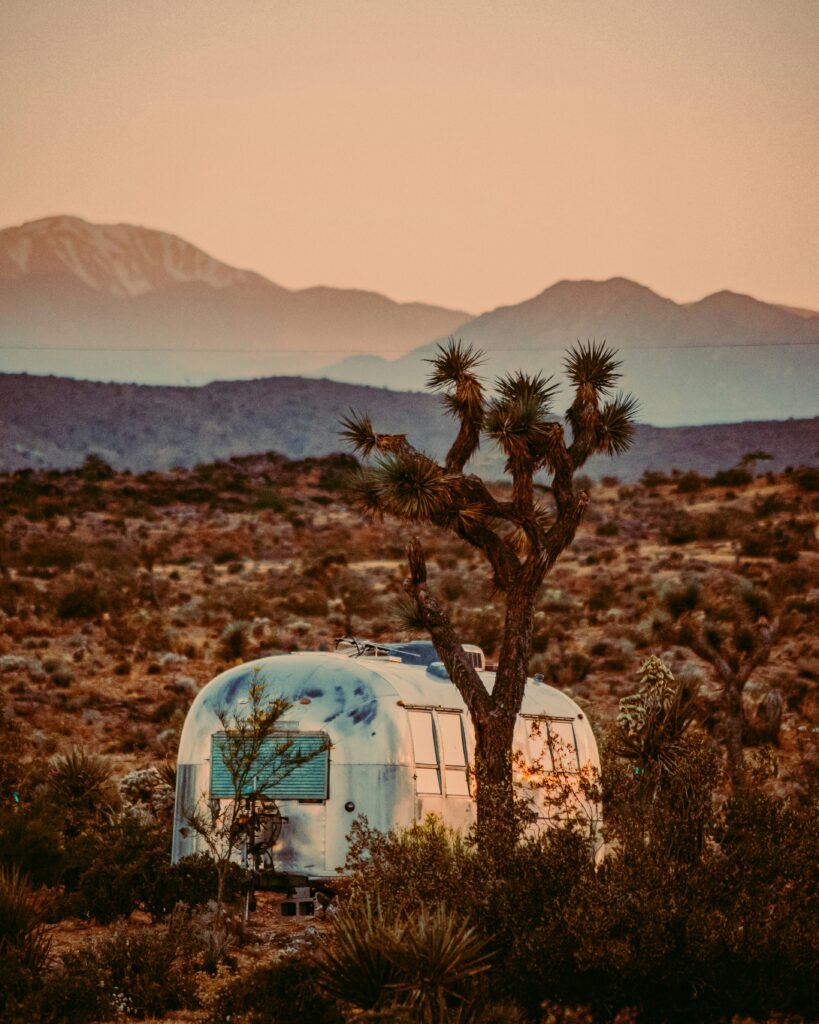
Campsites Overview
The Mojave Desert offers diverse camping options to suit your preferences. You'll find well-equipped developed campgrounds, rustic undeveloped sites, and vast areas for dispersed camping.
Developed Campgrounds
Developed campgrounds in the Mojave provide amenities for a comfortable stay. Mid Hills Campground sits at 5,600 feet elevation, offering a cooler retreat from the desert heat. Half of its 26 sites are surrounded by pinyon pine and juniper trees, creating a scenic backdrop for your camping experience.
These campgrounds typically feature:
- Picnic tables
- Fire rings
- Vault toilets
- Trash collection
Some may also have potable water available. Fees for developed campgrounds are usually around $25 per night. You can often make reservations in advance, ensuring your spot during busy seasons.
Undeveloped Campsites
Undeveloped campsites offer a more rugged experience while still providing basic amenities. These sites are perfect if you want to feel closer to nature without completely roughing it.
At undeveloped sites, you might find:
- Designated parking areas
- Simple fire pits
- Minimal signage
Bring your own water and be prepared to pack out all trash. These sites are often first-come, first-served, so arrive early during peak seasons to secure your spot.
Dispersed Camping
Dispersed camping in the Mojave gives you the ultimate freedom to choose your own adventure. You can set up camp in many areas of the Mojave National Preserve and Mojave Trails National Monument.
When dispersed camping:
- Choose sites at least 200 feet from water sources
- Use existing fire rings when possible
- Practice Leave No Trace principles
Remember to bring all necessary supplies, including plenty of water. There are no facilities or services in dispersed camping areas, so you must be self-sufficient and well-prepared for your stay.
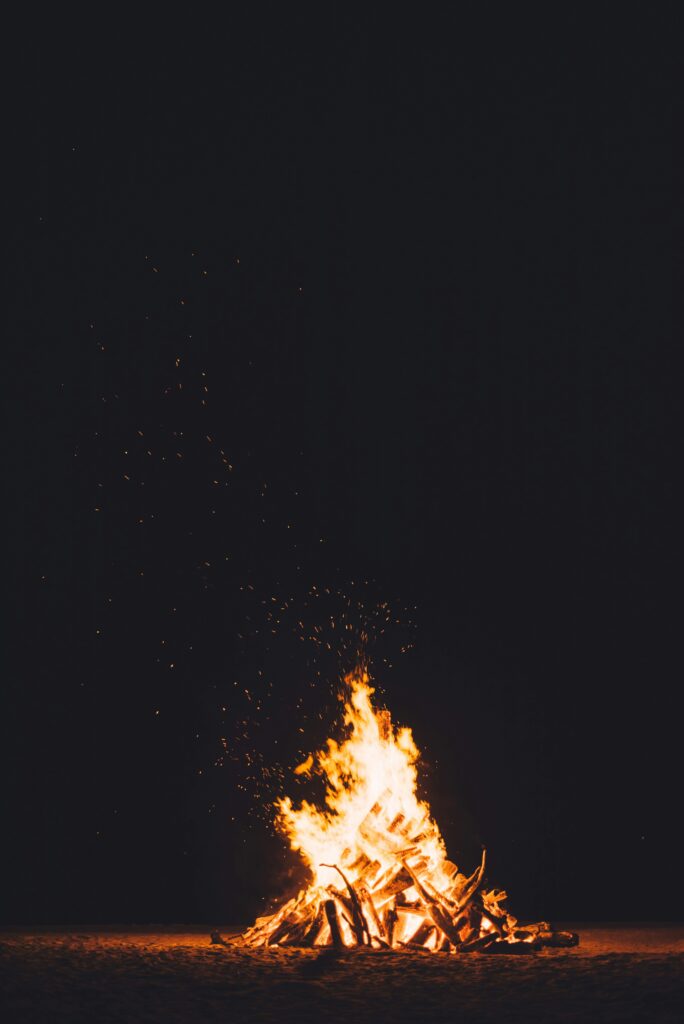
Campground Amenities
Mojave Desert campgrounds offer basic facilities to make your stay comfortable. You'll find essential amenities for water, sanitation, and meal preparation.
Water and Sanitation
You can access potable water at designated campgrounds in the Mojave National Preserve. This clean water is safe for drinking and cooking.
Most campgrounds provide pit toilets or vault toilets for your convenience. These facilities are maintained regularly to ensure cleanliness.
If you're traveling in an RV, some campgrounds like Hole-in-the-Wall offer dump stations. You can safely dispose of your wastewater before continuing your journey.
Remember to practice Leave No Trace principles and properly dispose of all waste to help preserve the desert environment.
Cooking and Picnic Facilities
You'll find picnic tables at many Mojave Desert campgrounds. These tables provide a convenient spot for preparing and enjoying your meals.
Some campsites offer fire rings or grills for cooking. Check local fire regulations before use, as restrictions may apply during dry seasons.
Consider bringing a portable camp stove for cooking. It's a reliable option when fire restrictions are in place.
Pack all the cooking utensils and supplies you'll need, as most campgrounds don't provide these items.
Hiking Trails and Outdoor Activities
The Mojave Desert offers diverse outdoor adventures for nature enthusiasts. You can explore stunning sand dunes, encounter unique wildlife, and challenge yourself on rugged rock formations.
Kelso Dunes Trails
Hiking the Kelso Dunes is a must-do experience in Mojave National Preserve. These massive sand dunes rise nearly 700 feet, providing a surreal desert landscape.
You'll find a 3-mile round trip trail that leads to the summit. As you trek, listen for the “singing sands” – a unique phenomenon where the dunes produce a low rumbling sound as sand particles shift.
Early morning or late afternoon are ideal times to hike, offering cooler temperatures and stunning views. Don't forget to bring plenty of water and wear sturdy shoes to navigate the soft sand.
Wildlife Watching
The Mojave Desert teems with fascinating creatures adapted to its harsh environment. You might spot desert bighorn sheep, coyotes, or jackrabbits during your visit.
Birdwatchers will delight in the variety of species, including roadrunners, cactus wrens, and golden eagles. Dawn and dusk are prime times for wildlife activity.
Consider bringing binoculars to enhance your viewing experience. Remember to maintain a safe distance from animals and never feed them.
Climbing and Bouldering
For rock climbing enthusiasts, the Kelbaker Boulders offer an exciting challenge. These granite formations provide various routes suitable for different skill levels.
You'll find the boulders scattered throughout the preserve, with popular areas near Kelbaker Road. Top-roping and bouldering are common activities here.
Always climb with a partner and bring proper safety equipment. Check weather conditions before heading out, as extreme heat can make climbing dangerous.
Remember to practice Leave No Trace principles to preserve the natural beauty of the area for future visitors.
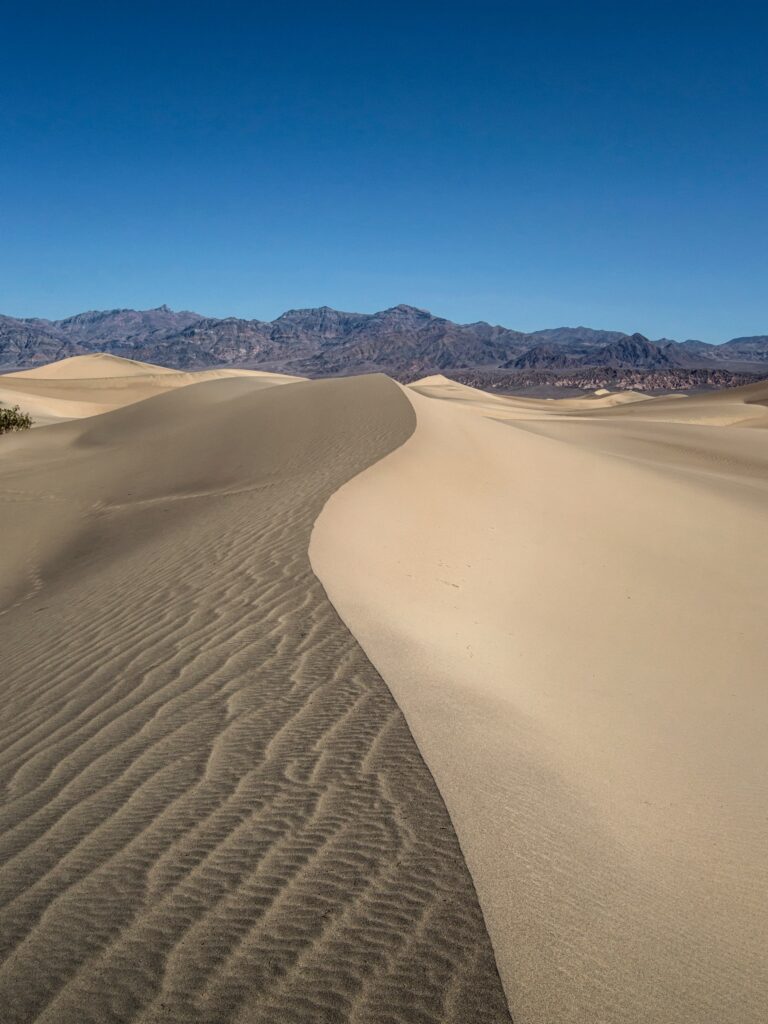
Leave No Trace Principles
Practicing Leave No Trace principles is crucial when camping in the Mojave Desert. These guidelines help preserve the delicate ecosystem and ensure future generations can enjoy its natural beauty.
Campsite Conservation
When setting up camp, choose sites that are already established to minimize your impact. Avoid creating new campsites or expanding existing ones. Reuse existing sites to protect the desert from further damage.
Pack out all your trash and dispose of it properly. The Mojave Desert doesn't have many trash receptacles, so be prepared to carry out everything you bring in. This includes food scraps and packaging.
Keep your campsite small and centralized. Avoid spreading out your gear over a large area. This helps preserve the natural landscape and reduces your footprint.
When nature calls, bury human waste at least six inches deep and 200 feet away from water sources, campsites, and trails. Pack out used toilet paper in a sealed bag.
Wildlife Protection
Respect the local wildlife by observing from a distance. Never feed animals, as this can alter their natural behaviors and make them dependent on human food.
Keep your pets under control at all times. It's best to leave them at home, but if you bring them, use a leash to prevent them from chasing or disturbing wildlife.
Protect water sources, which are scarce in the desert. Camp at least a quarter-mile away from springs and streams. These water sources are vital for desert animals' survival.
Store your food securely to prevent attracting wildlife to your campsite. Use sealed containers or bear canisters to keep curious critters away from your supplies.
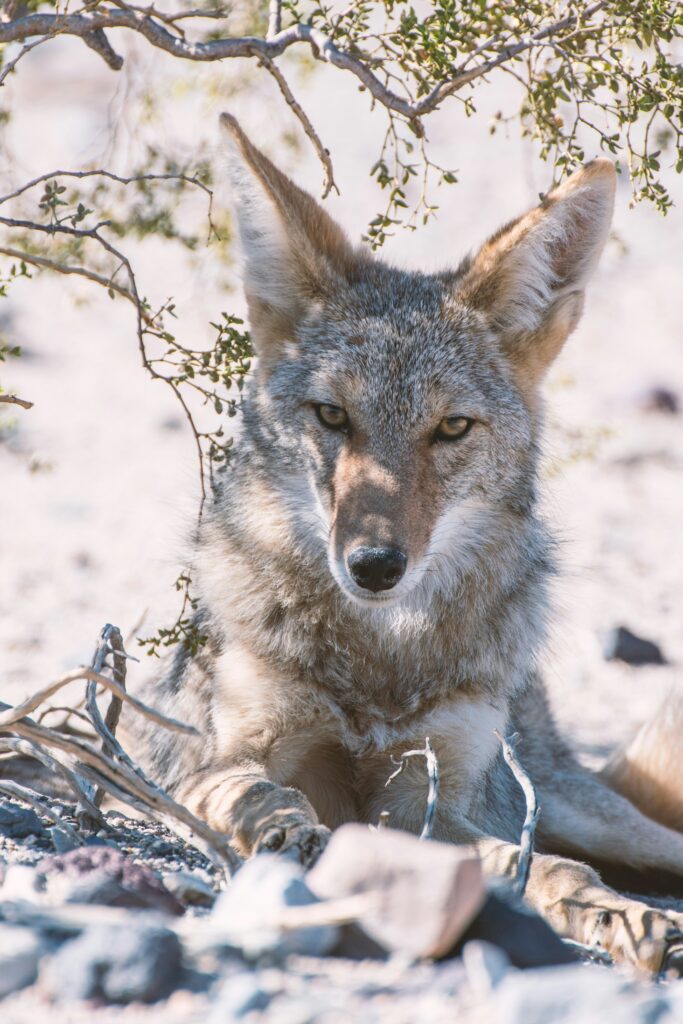
Navigating the Mojave
Exploring the Mojave Desert requires careful planning and navigation. Familiarize yourself with road conditions and prepare reliable navigation tools to ensure a safe and enjoyable journey.
Road Conditions
When driving through the Mojave, you'll encounter various road types. Kelbaker Road and Cima Road are paved and generally well-maintained, making them suitable for most vehicles. However, be prepared for occasional rough patches and wildlife crossings.
Black Canyon Road offers a more rugged experience. It's unpaved and can be challenging, especially after rain. You'll need a high-clearance vehicle to navigate its rocky sections safely.
Watch out for soft sand areas, particularly in washes like Black Tank Wash. These can be treacherous if you're not prepared. Always carry a shovel and traction boards in case you get stuck.
GPS and Offline Maps
Reliable navigation is crucial in the vast Mojave Desert. Your smartphone's GPS might not always work due to limited cell coverage. Consider downloading offline maps before your trip.
Bring a dedicated GPS device with preloaded desert maps. This will help you navigate even in areas without cell service. Make sure to mark important waypoints like your campsite and nearby water sources.
It's also wise to carry physical maps as a backup. Familiarize yourself with major landmarks and roads. Knowing GPS coordinates of key locations can be lifesaving in emergencies.
Remember to share your planned route with someone before heading out. This extra precaution can be invaluable if you encounter unexpected difficulties in the desert.
Unique Landscapes and Natural Features
The Mojave Desert boasts diverse and captivating landscapes that will leave you in awe. From towering sand dunes to intriguing rock formations and vibrant wildflower displays, this desert environment offers a visual feast for nature enthusiasts and adventurers alike.
Sand Dunes Exploration
When you visit the Mojave Desert, you'll be amazed by the magnificent Kelso Dunes. These impressive sand formations rise up to 700 feet high, creating a breathtaking sight against the desert sky. As you hike across the dunes, you'll experience the unique phenomenon of “singing sands” – a low rumbling sound produced by wind-blown sand particles.
For the best views, climb to the top of the dunes at sunrise or sunset. The changing light casts beautiful shadows and colors across the landscape, perfect for photography enthusiasts. Remember to bring plenty of water and wear sturdy shoes, as the sand can get quite hot during the day.
Rock Formations
The Mojave Desert's rock formations offer a geological wonderland for you to explore. Volcanic rock walls and towering spires create an otherworldly atmosphere. Van Winkle Mountain and Dharma Tower are notable landmarks that showcase the desert's rugged beauty.
As you hike through the area, keep an eye out for:
- Towering monoliths
- Wind-carved arches
- Colorful striations in the rock faces
These formations not only provide stunning photo opportunities but also offer insights into the region's geological history. Many rocks bear evidence of ancient lava flows and tectonic activity, telling the story of the desert's formation over millions of years.
Wildflower Blooms
Spring in the Mojave Desert brings a spectacular display of wildflowers, transforming the arid landscape into a colorful canvas. The timing and intensity of blooms vary depending on winter rainfall, but when conditions are right, you're in for a treat.
Look for these common desert wildflowers:
- Desert marigold
- Desert lily
- Mojave aster
- Beavertail cactus blossoms
To maximize your chances of seeing wildflowers, plan your visit between late February and early May. Early morning or late afternoon provide the best light for viewing and photographing these delicate desert blooms. Remember to tread lightly and avoid picking flowers to preserve this fragile ecosystem for future visitors.
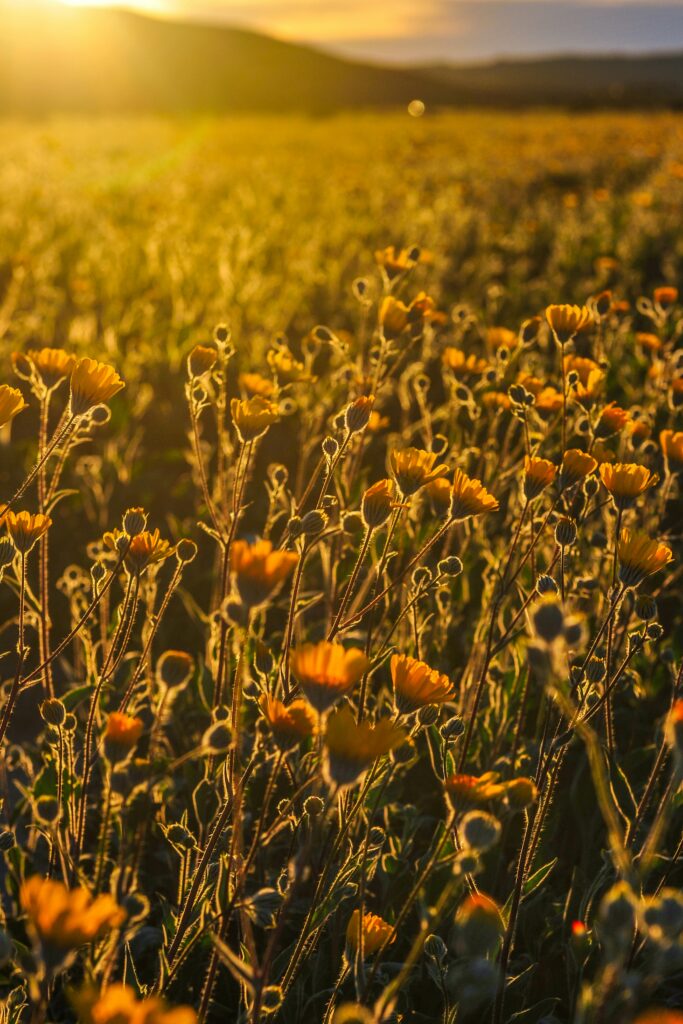
Camping Safety and Preparedness
Staying safe while camping in the Mojave Desert requires careful planning and awareness. You'll need to be prepared for emergencies and potential wildlife encounters to ensure an enjoyable experience.
Emergency Procedures
When camping in the Mojave, always inform someone of your plans and expected return date. Bring a fully charged cell phone, but be aware that service may be limited. Pack a first aid kit and know how to use it.
In case of a medical emergency, call 911 if possible. If you're in a developed campground, alert the camp host or nearby campers for assistance.
For fire emergencies, use designated fire rings when available. Keep a bucket of water nearby to extinguish flames completely. If a wildfire occurs, evacuate immediately and notify authorities.
In extreme heat, seek shade and stay hydrated. Watch for signs of heat exhaustion or heatstroke. If you get lost, stay put and signal for help using bright clothing or a whistle.
Wildlife Encounters
The Mojave Desert is home to diverse wildlife. While most animals avoid humans, it's crucial to know how to react if you encounter them.
- Snakes: Watch where you step and use a flashlight at night. If you see a snake, give it space to move away.
- Scorpions: Shake out shoes and clothing before use. Avoid picking up rocks or wood without checking underneath.
- Large mammals: Keep food in sealed containers and never feed wildlife. If you encounter a mountain lion or coyote, make yourself appear large and back away slowly.
Remember, you're in their habitat. Observe animals from a distance and never approach or disturb them. By respecting wildlife and following these guidelines, you'll help ensure a safe and memorable camping experience in the Mojave Desert.
Fire Management and Regulations
Proper fire management is crucial when camping in the Mojave Desert. You'll need to follow specific rules to protect the fragile ecosystem and ensure everyone's safety.
Campfires
Campfires in the Mojave Desert are only allowed in designated fire rings or containers. You must not create new fire rings or build fires outside existing ones. This helps minimize environmental impact and prevents wildfires.
When setting up your campfire, choose a spot at least 15 feet away from tents, shrubs, and other flammable materials. Keep your fire small and manageable.
Always have water and a shovel nearby to extinguish the fire quickly if needed. Before leaving your campsite or going to sleep, make sure your fire is completely out. Douse it with water, stir the ashes, and repeat until it's cool to the touch.
Firewood and Fuel
Gathering firewood in the Mojave Desert is generally not allowed. You should bring your own firewood or purchase it from approved local vendors. This helps protect the desert ecosystem and prevents the spread of invasive species.
When choosing firewood, opt for:
- Kiln-dried wood
- Local sources (within 50 miles of your campsite)
- Certified pest-free options
Avoid using liquid fuels to start your fire, as they can be dangerous and harm the environment. Instead, use small kindling and newspaper to get your fire going.
Remember to pack out any unused firewood when you leave. Don't leave it behind for others, as it may introduce pests to the area.
Fire Bans and Restrictions
Fire restrictions in the Mojave Desert can change quickly based on weather conditions and fire danger levels. Always check for current fire regulations before your trip.
During high fire danger periods, campfires may be completely banned. In these cases, you can use:
- Portable gas stoves
- Lanterns with shut-off valves
- Other approved heat sources
Even when fires are allowed, you might consider alternatives to minimize your impact. Enjoying the desert night sky without a fire can be a unique and rewarding experience.
Stay informed about fire conditions and be prepared to adjust your plans. Your cooperation helps protect this beautiful and delicate ecosystem for future visitors to enjoy.
Camping with Pets and Groups
Bringing your furry friends or a large group to the Mojave Desert can enhance your camping experience. The desert offers unique opportunities for pet owners and group travelers alike.
Pet-Friendly Campsites
You'll find several pet-friendly campsites in the Mojave Desert. Remember to keep your pets on a leash and clean up after them. Pet waste must be disposed of properly to maintain the natural environment.
Be mindful of the desert heat, which can be harsh on your pets' paws. Bring plenty of water and shade for your furry companions. Some campgrounds may have restrictions on pets in certain areas, so always check the specific rules before you arrive.
Consider camping in areas that offer more privacy and solitude if your pet tends to be vocal. This way, you can enjoy your time without disturbing other campers.
Group Camping Facilities
If you're planning a trip with friends or family, the Mojave Desert has excellent options for group camping. The Black Canyon Equestrian and Group Campground is an ideal choice for larger groups.
This facility can accommodate up to 50 people at the group site and 35 campers at the equestrian site. If you're bringing horses, you'll appreciate the corrals available for your equine companions.
Keep in mind that groups with more than 7 vehicles or 25 people require a special use permit. Plan ahead and secure your permit to ensure a smooth camping experience.
Group campsites often provide amenities like fire rings and picnic tables, making it easier for you to gather and socialize with your fellow campers.
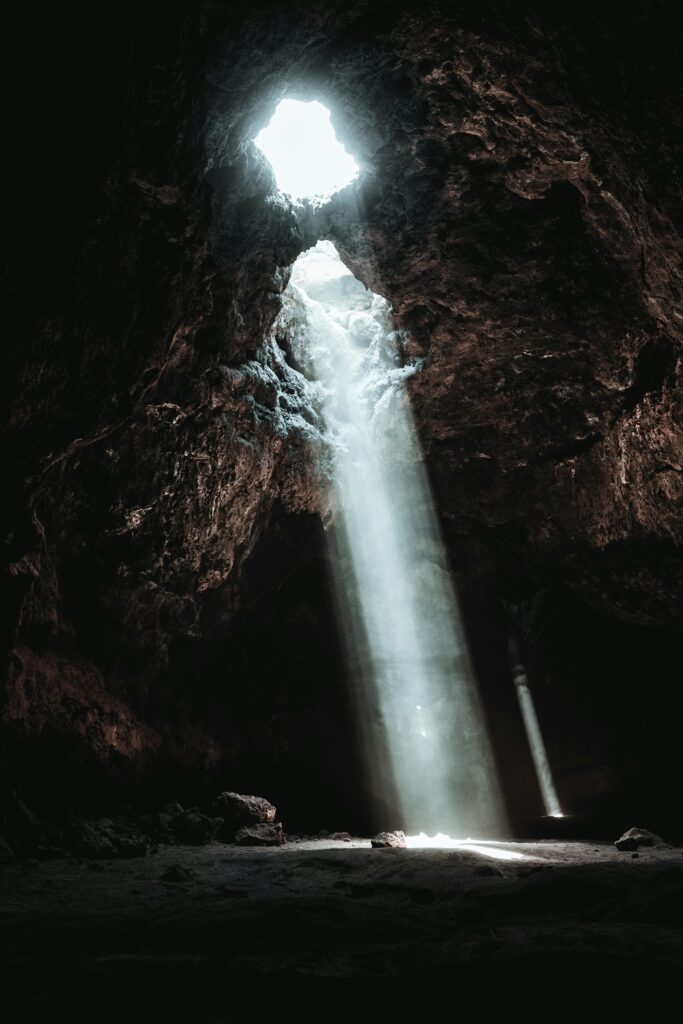
Booking and Fees
Planning your Mojave Desert camping adventure requires understanding the costs and reservation process. Fees and booking methods vary depending on the campground you choose.
Understanding Campground Fees
Camping fees in the Mojave National Preserve are set to change on January 1, 2025. The Mid Hills Campground fee will increase to $20 per night, up from the current $12. If you're planning a group outing, the Black Canyon Group and Equestrian Campground will cost $50 per night, a significant jump from the previous $25 rate.
For those seeking a more rustic experience, backcountry camping is available across more than 700,000 acres of wilderness. This option is perfect for experienced desert backpackers looking to explore off the beaten path.
Starting in 2025, you'll be able to make reservations through Recreation.gov. The online system opens on December 23, 2024, at 9:00 am Pacific Time for bookings beginning January 1, 2025.
First-Come, First-Served Sites
If you prefer spontaneity, many campgrounds in the Mojave National Preserve operate on a first-come, first-served basis. This means you can't reserve these sites in advance, so it's best to arrive early, especially during peak seasons.
Keep in mind that group campsites are an exception to this rule and do require reservations. When you arrive at a first-come, first-served campground, you'll need to pay your fees on-site.
For up-to-date information on campground availability and fees, it's always a good idea to check the official Mojave National Preserve website before your trip. Remember to bring exact change or be prepared to pay through the Pay.gov system where available.

